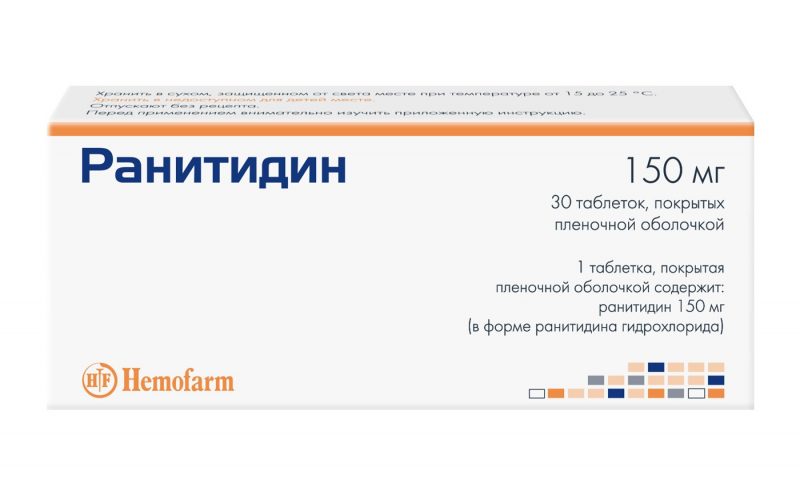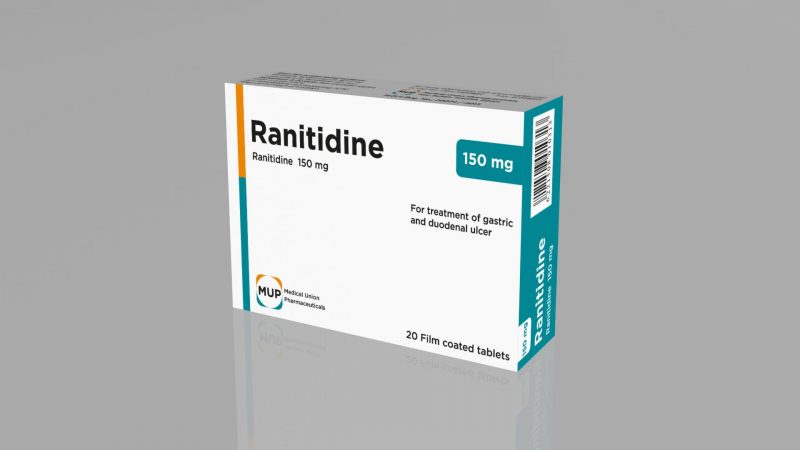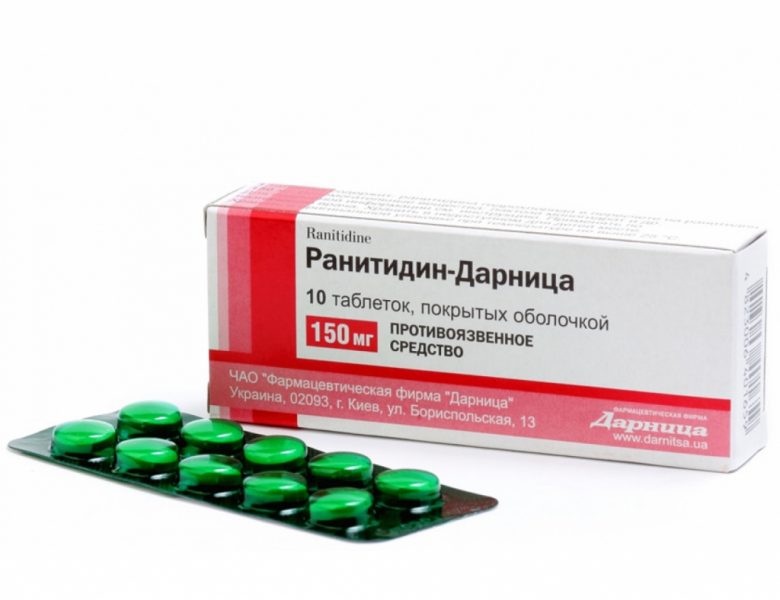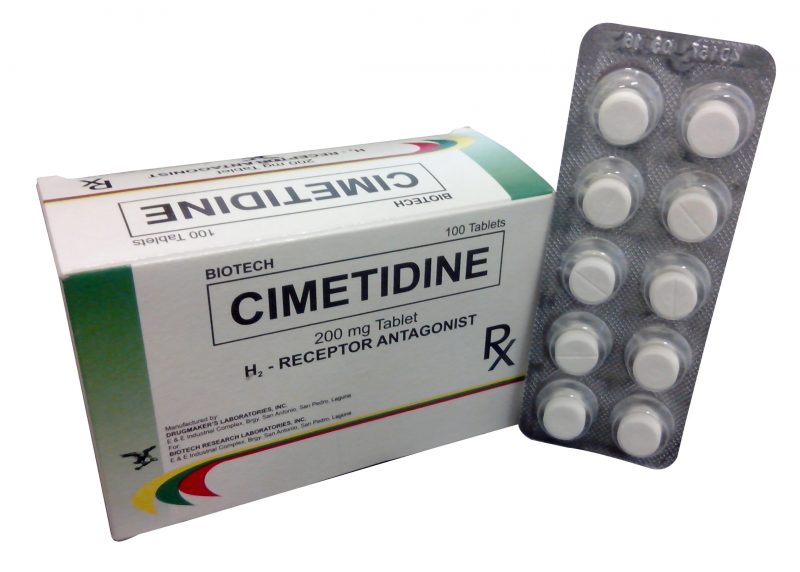The tool helps to eliminate the causes, symptoms and consequences of gastrointestinal diseases that occur against a background of changes in the secretion of gastric acid. For most patients, it is important to know the principle of action of the medicine, which helps Ranitidine when it is better to take pills. In addition to drug therapy, a diet will be required to increase the effectiveness of treatment.
Material Content:
The composition of the drug
Ranitidine belongs to the second generation of the so-called H2-blockers. Due to the properties of the drug, a mediator binds, stimulating the release of hydrochloric acid (HCl). Causes increased secretion of HCl histamine. Ranitidine tablets and other H2 blockers inhibit histamine receptors in the stomach. As a result, the pH rises to mucosally safe values of 4–6.
The content of the active ingredient in one tablet is 150 or 300 mg. The auxiliary part is represented by corn starch, microcrystalline cellulose, sodium lauryl sulfate and other compounds.
What helps ranitidine, indications for use
Gastric acid is synthesized by parietal cells of the organ mucosa. Digestive enzymes in the stomach cavity are active at low pH values (1.5). In addition, in an acidic environment, microorganisms die faster.
Changes in pH occur constantly depending on the allocation of juice upon ingestion of food or starvation, during stress. Chronic inflammatory diseases of the digestive tract are accompanied by a violation of the formation of HCl.In turn, a change in acid secretion serves as a trigger for the development of pathological conditions.
A constant excess or lack of acid, significant fluctuations in the level of HCl cause great damage to the work of the entire digestive tract.
Ranitidine as an H2 blocker inhibits the activity of histamine receptors, which affect the secretory functions of parietal cells. As a result, there is a decrease in the formation of stomach acid. Moreover, Ranitidine mainly affects basal and stimulated secretion. This type of reaction is due to the effects of food in the stomach, hormones, stimulants of biogenic origin (histamine and gastrin).
Ranitidine should be taken with erosive and ulcerative processes in the mucosa of the upper gastrointestinal tract. Due to the inhibitory effect of the drug on acid secretion, an antiulcer effect develops. With an increase in pH to 4-6, the damaged mucosa heals faster, the ulcer heals.
Assign an H2-blocker in the following acid-dependent conditions, gastrointestinal diseases:
- reflux esophagitis;
- exacerbations of peptic ulcer disease;
- gastroesophageal reflux disease, complications of GERD;
- medicinal and situational ulcers - gastric and duodenal;
- ulcerative bleeding and perforation.
Ranitidine is used alone or as part of a comprehensive treatment. Best of all, it helps reduce acid production at night.
With peptic ulcer (gastric or duodenal ulcer), acute gastroduodenal bleeding, the drug is prescribed together with other antisecretory drugs. If the cause of the ulcer is Helicobacter pylori infection, antibiotic therapy is still required.
Instructions for use and dosage of tablets
Ranitidine can be taken without regard to meals. Also, the instructions for use specify that the tablets are not chewed, washed down with water.
Dosages and treatment for adults and adolescents over 12 years old
| Diseases and conditions | The number of tablets per day | Course (weeks) | |
|---|---|---|---|
| 150 mg | 300 mg | ||
| Erosive reflux esophagitis: •treatment; • prevention. | 2 (1 in the morning and evening) or 4 (1 to 4 times); 2 (1 each morning and evening) | 1 (at night) | 8–12 |
| Peptic ulcer: • treatment of exacerbations; • prevention of exacerbations. | 2 (1 in the morning and evening); 1 (at night) | 1 (at night) or 1 in the morning and in the evening; 1 (for smokers) | 4–8 |
| Drug ulcer: •treatment; • prevention. | 2 (1 in the morning and evening); 2 (1 each morning and evening) | 1 (at night) | 8–12 |
| Stress or postoperative ulcer treatment. | 2 (1 each morning and evening) | 4–8 | |
| Recurrent gastroduodenal bleeding. | 2 (1 each morning and evening) | 4–8 |
With renal failure, it is not recommended to take more than 1 tablet (150 mg) per day. If the patient has impaired liver function, then reduce the dose of the drug in consultation with the attending physician.
During pregnancy and lactation
Ranitidine is not prescribed for pregnant women. A contraindication for treatment with an H2 blocker is also breastfeeding.
Drug interaction
If you take Ranitidine and Ketoconazole or Itraconazole together, then an antisecretory drug will reduce the absorption of antifungal drugs. In addition, an H2-blocker is able to inhibit the processes in the liver, which are necessary for the metabolism of a large group of drugs. Among them are popular drugs: metronidazole, diazepam, theophylline and others.
H2-blockers do not allow secretion of HCl, antacids bind already released hydrochloric acid. Often patients use both groups of drugs for heartburn, stomach pain, peptic ulcer. However, antacids, for example, sodium bicarbonate, Maalox, Almagel, impair the absorption of ranitidine (as well as other drugs). You should take a break of at least two hours between the use of funds.
Contraindications, side effects and overdose
The drug is not prescribed for hypersensitivity to ranitidine and / or other compounds in the composition of tablets, as well as to patients under the age of 12 years.
Other contraindications mentioned above (pregnancy, lactation).
Ranitidine causes side effects (infrequently). There are discomfort in the abdomen, dyspepsia or other disorders of the digestive system. An allergic response of the body in the form of urticaria, Quincke's edema, bronchospasm, anaphylaxis is possible.
Negative reactions to medication from other organs:
- headaches, fatigue and drowsiness;
- disorders of the blood;
- hypotension, bradycardia, arrhythmia;
- visual impairment;
- joint pain
- impotence;
- amenorrhea.
An overdose of the drug is dangerous by the appearance of seizures. There is also an increase in arrhythmia and bradycardia. These conditions require symptomatic treatment.
Analogues of the drug
In 1988, the Scottish scientist D. Black was awarded the Nobel Prize for studying the role of H2-blockers in the secretion of gastric acid and the development of drugs that inhibit the process. For more than 20 years, the drugs of the first two generations have been recognized as the “gold standard” for the treatment of acid-dependent gastrointestinal lesions.
Cimetidine - historically the first H2-blocker, has pronounced side effects. The drug causes diarrhea, headaches, disrupts puberty in boys. Ranitidine belongs to the second generation of histamine H2 receptor antagonists. Famotidine belongs to the third generation of H2-blockers, nizatidine and roxatidine - the fourth and fifth.
Ranitidine and Famotidine do not have the abundance of side effects that are characteristic of cimetidine. The incidence of adverse events does not exceed 1%. Famotidine is 20-60 times more active than cimetidine. The activity of ranitidine is 3–20 times lower than that of famotidine.
Trade names for Ranitidine analogues (generics) and 3rd generation H2 blockers:
- Histac
- Zantac
- Atzilok;
- Ranisan;
- Famotidine;
- Famosan;
- Quamatel.
H2-blockers act only on part of the mechanism that is involved in the synthesis of stomach acid. The secretion due to the participation of histamine is reduced, but the influence of other stimulants, gastrin and acetylcholine, remains.
More powerful acid secretion inhibitors have been created for the treatment of peptic ulcers, reflux esophagitis and other similar conditions.
Proton pump blockers are omeprazole, lansoprazole, pantoprazole, rabeprazole. This group of drugs is also called proton pump inhibitors (PPIs). Trade names for tablets: Omez, Nolpaza, Rabelok. Experts suggest combining IPP intake during the day with the appointment of H2 blockers at night.




















